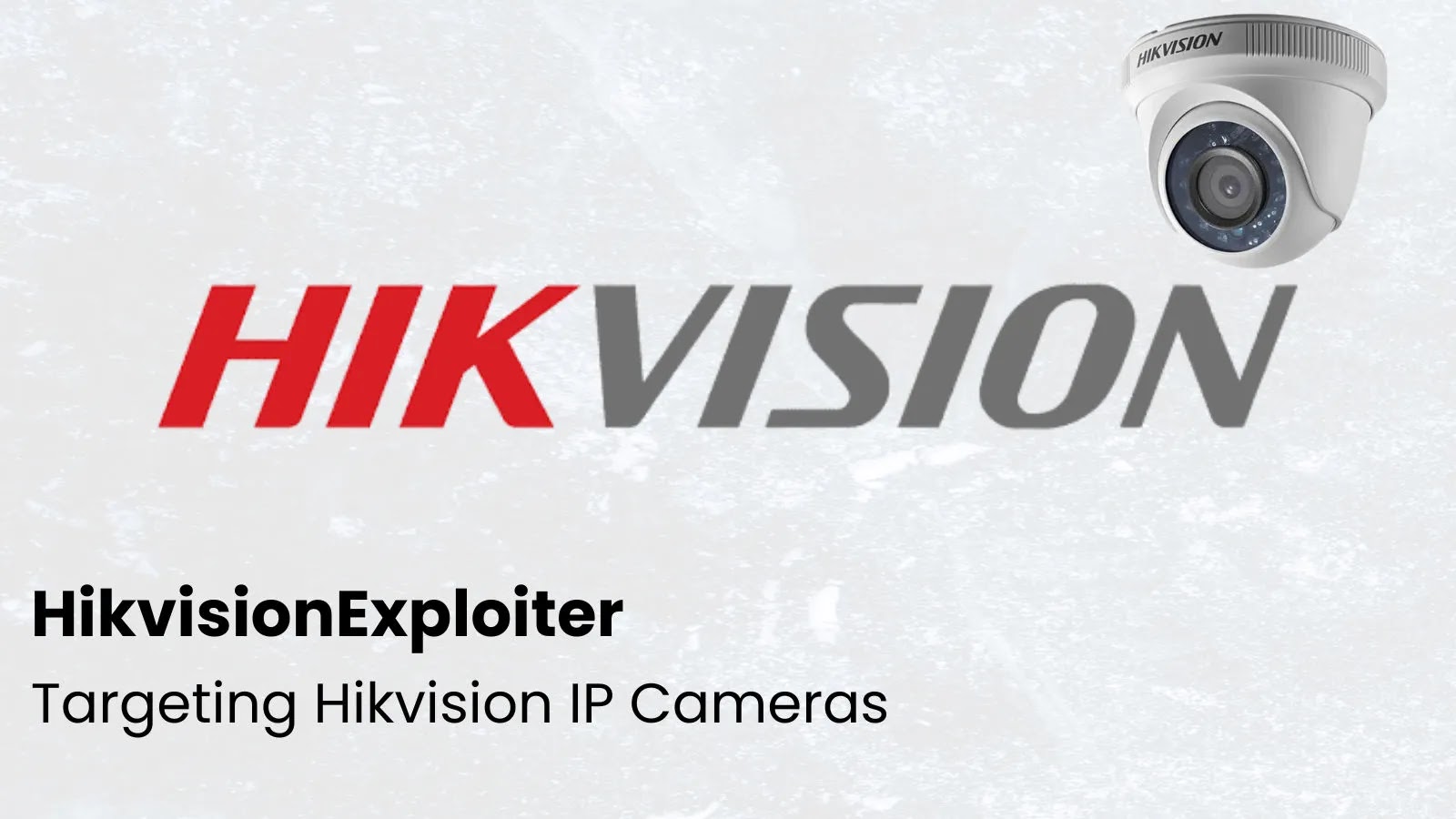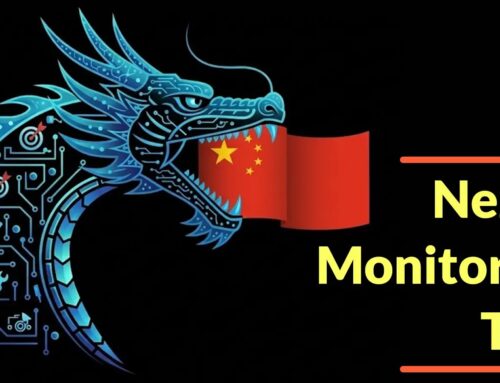
Hikvision Exploiter – An Automated Exploitation Toolkit Targeting Hikvision IP Cameras
The Rise of Hikvision Exploiter: A Critical Threat to IP Camera Security
The security landscape for Internet Protocol (IP) cameras has taken a concerning turn with the emergence of HikvisionExploiter, an open-source toolkit designed to automate attacks against vulnerable Hikvision devices. Originally surfacing on GitHub in mid-2024, this Python-based utility has garnered renewed and alarming attention amidst a surge in camera exploits observed throughout 2025. For security professionals, IT administrators, and anyone relying on these ubiquitous cameras, understanding this tool and its implications is paramount.
What is HikvisionExploiter?
HikvisionExploiter is an automated exploitation toolkit specifically engineered to target unauthenticated endpoints within Hikvision IP cameras running outdated firmware. While developed with researchers and red teamers in mind – ostensibly for penetration testing and vulnerability assessment – its capabilities pose a significant risk if leveraged by malicious actors. The tool streamlines the process of identifying and exploiting specific weaknesses, turning what could be complex manual attacks into a click-and-run operation.
The primary focus of HikvisionExploiter is on unauthenticated access. This means that an attacker doesn’t need to guess passwords or bypass login screens; the vulnerabilities are present before any authentication is required. This significantly lowers the bar for compromise, making a wider range of attackers capable of exploiting affected devices.
Targeted Vulnerabilities and Firmware
While the initial report doesn’t specify all targeted vulnerabilities, it highlights cameras running outdated firmware versions, such as 3.1.3.150324, as particularly susceptible. This points to known or recently discovered vulnerabilities that are patched in later firmware releases but remain open in older versions. Attackers frequently scan for devices with these specific firmware versions, knowing they represent an easy target due to unaddressed security flaws. While specific CVEs linked to these unauthenticated endpoints aren’t detailed in the provided source, it’s highly probable that they relate to known issues that allow for command injection, unauthorized access, or configuration manipulation without proper credentials.
Why This Tool Matters
- Automation of Attacks: HikvisionExploiter significantly lowers the technical barrier for attackers. Instead of requiring deep technical knowledge of specific vulnerabilities, it automates the exploitation process, making it accessible to a broader range of malicious actors.
- Widespread Impact: Hikvision is one of the world’s largest suppliers of video surveillance products. The sheer number of deployed Hikvision cameras means that a tool like this could have a vast potential attack surface. Thousands, if not millions, of devices could be at risk if not properly maintained.
- Renewed Attention in 2025: The fact that this tool gained renewed attention in 2025 due to a surge in camera exploits underscores its effectiveness and the ongoing threat it represents. This suggests that these vulnerabilities are actively being exploited in the wild.
- Unauthenticated Access: The ability to exploit devices without authentication is the most critical aspect. It means that perimeter defenses typically designed to stop unauthorized access to network resources might not protect these cameras if they are directly exposed to the internet or an untrusted network segment.
Remediation Actions for Hikvision IP Cameras
Addressing the threat posed by HikvisionExploiter and similar tools requires a proactive and multi-layered security approach. Here are critical steps to take:
- Immediate Firmware Updates: This is the single most important action. Ensure all Hikvision IP cameras are running the latest available firmware. Check the official Hikvision support portal regularly for updates relevant to your specific camera models. Firmware updates often include critical security patches.
- Network Segmentation: Isolate IP cameras from your primary operational networks. Place them on a dedicated VLAN or network segment with strict outbound and inbound firewall rules. Cameras should only be able to communicate with necessary recording devices (NVR/DVR) and management systems.
- Restrict Internet Exposure: Do not directly expose IP cameras to the public internet unless absolutely necessary. If remote access is required, implement a secure VPN tunnel for connections. Avoid port forwarding camera interfaces directly.
- Strong, Unique Passwords: While HikvisionExploiter targets unauthenticated endpoints, strong password policies are still crucial for authenticated access points to prevent other types of attacks. Change default credentials immediately upon installation.
- Disable Unnecessary Services: Review camera configurations and disable any services (e.g., UPnP, SSH, FTP, guest accounts) that are not strictly needed for operation. Each open service is a potential attack vector.
- Regular Security Audits: Conduct periodic security audits of your IP camera infrastructure. This includes vulnerability scanning (see tools below) and penetration testing to identify weaknesses before attackers do.
- Monitoring and Logging: Implement robust logging and monitoring for camera activity and network traffic to and from camera segments. Look for anomalous login attempts, configuration changes, or unusual data transfers.
Tools for Detection and Mitigation
Employing various tools can help in detecting vulnerable Hikvision cameras and assessing your security posture:
| Tool Name | Purpose | Link |
|---|---|---|
| Nmap (Network Mapper) | Network discovery and port scanning to identify exposed camera interfaces. | https://nmap.org/ |
| OpenVAS / GVM | Comprehensive vulnerability scanner to detect known CVEs in network devices, including cameras. | https://www.greenbone.net/ |
| Kali Linux | Penetration testing distribution with various security tools that can be used for camera assessments. | https://www.kali.org/ |
| Firmware Analysis Tools | For advanced users, tools like Binwalk can extract and analyze firmware images for embedded vulnerabilities. | https://github.com/ReFirmLabs/binwalk |
Conclusion
The emergence and continued relevance of HikvisionExploiter serve as a stark reminder of the persistent threats facing IoT devices, particularly IP cameras. The automation of attacks on readily available unauthenticated endpoints for outdated firmware versions creates an urgent need for action. Organizations and individuals running Hikvision IP cameras must prioritize firmware updates, implement stringent network segmentation, and adhere to best security practices to protect their surveillance infrastructure from compromise. Staying informed about new tools and vulnerabilities is crucial in the ever-evolving cybersecurity landscape.





